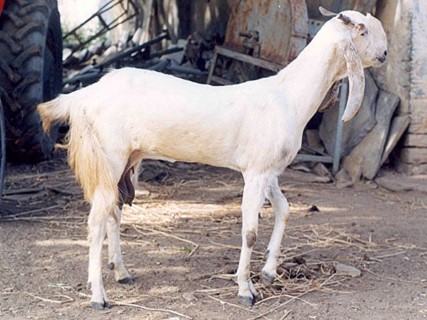Jamnapari (or Jamunapari) goats,
ancestors of the American Nubian, originated in Indian and are bred for both
milk and meat. Since 1953 they have been imported to Indonesia (popular as
Etawa goat, and its mixture with a local goat called "PE", Peranakan
Etawa or Etawa mix) where they have been a great success. The name is derived
from the rivers Yamuna, Jamuna (West Bengal) and Jamuna (Bangladesh) of India
and Bangladesh. In India there were an estimated 580,000 of the breed in the
1972, although less than 5000 were thought to be purebred.
Jamnapari Goats vary in color
but they typically are white with patches of tan on their neck and head. Their
heads tend to have a highly convex nose, which gives them a parrot-like
appearance. They have long flat drooping ears unusually long legs, and both
genders have horns.
They have round udders and conical
well-developed teat. Their average lactation yield is slightly less than two
kilograms per day.
During the winter they spend more than 90% of
their time grazing, although this falls to around 55% in the summer. They browse
on bushes, tree leaves, and the top of grasses rather than typical ground
grazing.

